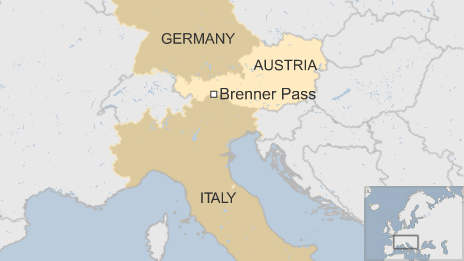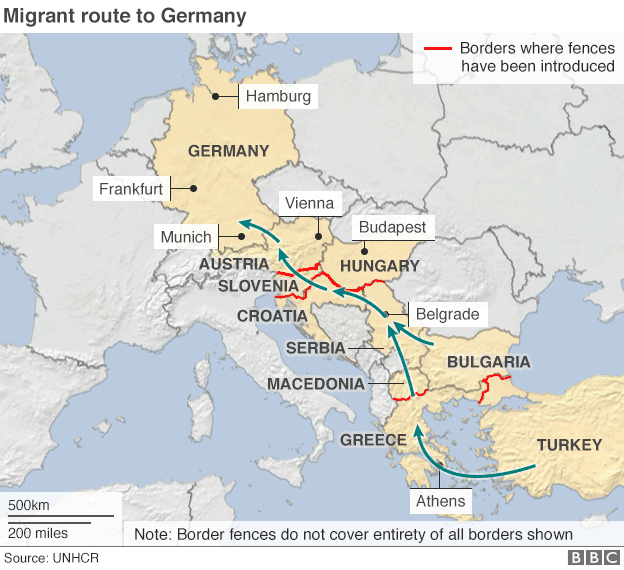Europe migrants: Austria builds Brenner border centre despite criticism
- Published

Austria's plans to tighten border controls prompted protests nine days ago in Brenner, on the border between Austria and Italy
Austria says it has begun work to tighten immigration controls at a key north-south European crossing point.
Police say concrete was poured on Tuesday as building commenced of a control centre at the Brenner crossing on the border with Italy in the Alps.
It is the latest in a series of hardline steps taken by Austria to clamp down on migration.
But the EU, Germany and Italy, as well as refugee agencies, have criticised the measures.
Aid groups say the steps effectively mean decisions on asylum will be made within minutes or hours at border centres.
They say that means asylum seekers could then be refused entry to the country - breaching both European law and the Austrian constitution, and encouraging migrants to turn to human traffickers.
'Grave error'
Austria has become known for its strict stance on migration, including introducing border fences and controls and tough asylum rules including a cap on numbers claiming asylum.
Last year, it became a major transit country for migrants seeking to claim asylum in Germany and correspondents say the influx has contributed to the popularity of the far right, raising tensions within the governing coalition.
That approach, pledged incoming Interior Minister Wolfgang Sobotka on Sunday, "will be continued".
"This is probably the most fundamental change in recent decades," Michael Landau, head of the Catholic non-governmental organisation Caritas, told reporters on Monday.
"A change which means Austria virtually takes leave of the right to asylum."

Austria says it is worried that the closure of the Balkan migration route from Greece to Austria and further north will intensify pressure on the route from Libya into Italy and then further north.
Brenner is one of the main crossings, with a reported 5,500 lorries passing through on a daily basis.
The construction of the control centre there - consisting of a registration hall and barriers in a lay-by off the northbound carriageway - is due to be completed by the end of May.
But plans to introduce stricter border controls are deeply controversial - and protests at the crossing more than a week ago ended in clashes.
On Tuesday, the European Commission said it was "very concerned" about the new centre.
Sandro Gozzi, Italy's state secretary for European affairs, said late on Monday that the construction of the centre "violates European rules".
However, Austria's outgoing Interior Minister Johanna Mikl-Leitner argued during a visit to Rome on Friday that steps had to be taken.
"Amongst other things the Italian government has to ensure that all migrants are registered in hotspots and housed nearby," she said.


A note on terminology: The BBC uses the term migrant to refer to all people on the move who have yet to complete the legal process of claiming asylum. This group includes people fleeing war-torn countries such as Syria, who are likely to be granted refugee status, as well as people who are seeking jobs and better lives, who governments are likely to rule are economic migrants.